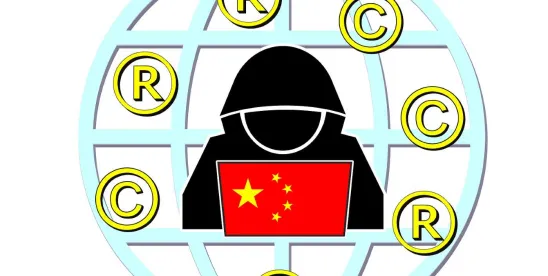On October 30, 2024, China’s National Intellectual Property Administration (CNIPA) and State Administration for Market Regulation (SAMR) jointly released the Notice on Method for Calculating Illegal Business Turnover (Volume) in Trademark Infringement Cases (商标侵权案件违法经营额计算办法). The Method will be used for calculating penalties outside of the judicial system in administrative enforcement. While administrative enforcement will not yield damages, the SAMR can levy high penalties that may work as effective deterrents. For example, the Shenzhen Municipal Administration for Market Regulation issued an injunction and fine of over 12 million RMB in a case last year. Further, the Method might be used for determining whether referral for criminal prosecution is proper based on monetary thresholds.

A translation follows. The original text can be found here (Chinese only).
Article 1 These Measures are formulated in accordance with the Trademark Law of the People’s Republic of China, the Regulations for the Implementation of the Trademark Law of the People’s Republic of China, and other laws and regulations in order to promote strict, standardized, fair and civilized law enforcement in trademark infringement cases, safeguard the legitimate rights and interests of business entities, and create a market environment of fair competition.
Article 2 These Measures shall apply when, in the process of handling trademark infringement cases, the trademark administrative law enforcement departments have determined that the acts of the parties involved are trademark infringements.
Article 3 The calculation of illegal business volume shall follow the principles of legality, rationality, objectivity and fairness.
Article 4 Illegal business volume refers to the total value of infringing goods involved in the trademark infringement committed by the party or the business income generated by the infringement.
Article 5 The value of infringing goods sold shall be calculated based on the actual sales price.
The value of infringing goods that have not yet been sold shall be calculated based on the actual average sales price of the infringing goods that have been ascertained; if the actual average sales price cannot be ascertained, it shall be calculated based on the marked price of the infringing goods.
If the actual sales price cannot be ascertained or the infringing goods have no price tag, the price shall be calculated based on the median market price of the infringed goods during the period when the infringement occurred.
For goods that have been manufactured but have not yet been affixed with infringing registered trademark logos, if there is definite and sufficient evidence to prove that the goods will infringe on the exclusive rights of others to use registered trademarks, their value should be included in the illegal business volume.
Article 6 The market median price of the infringed product shall be determined according to the retail guidance price of the same product published by the infringed party. If no retail guidance price is published, it shall be determined according to the following method:
(1) If there are multiple merchants selling the same infringing product in the market, the retail prices of several of them shall be sampled and the average shall be taken to determine the market median price; if there is only one merchant selling the product, the market median price shall be determined according to the retail price of that merchant;
(2) If there are no identical infringing products on the market, the price shall be determined based on the median price of identical infringing products previously sold on the market, or based on the median price of identical infringing products on the market that are identical or similar to the infringing products in terms of function, purpose, main materials, design, configuration, etc.
If it is difficult to determine the market middle price in accordance with the provisions of the preceding paragraph, it may be determined by a price determination agency.
The statements of the parties and the market median price of the infringed products provided by the trademark right holder can be used as a reference after reviewing other related evidence and verifying their authenticity.
If a party has any objection to the calculation result of the market median price of the infringed product, it shall provide evidence to prove its objection.
Article 7 If, in the course of a processing and contracting business involving all materials and labor, goods that infringe upon the exclusive right to use a registered trademark are used, the illegal turnover shall be calculated according to the actual sales price of the infringing goods; if the infringing goods are not priced separately, the illegal turnover shall be calculated according to the proportion of their value in the processing and contracting business activities involving all materials and labor; if the proportion of value cannot be distinguished, the illegal turnover shall be calculated according to the median market price of the infringed goods.
Article 8 If free gifts of goods infringe upon the exclusive rights of others to use registered trademarks, the illegal business turnover shall be calculated based on the actual purchase price or manufacturing cost of the gifts. If the actual purchase price or manufacturing cost of the gifts cannot be determined, or if the gifts are non-standard goods, the illegal business turnover shall be calculated based on the marked price or the market median price of the infringed goods.
Article 9 If a refurbished product infringes upon the exclusive right of another person to use a registered trademark, the illegal business turnover shall be calculated based on the overall value of the infringing product.
If the refurbished product itself does not infringe upon the exclusive rights of others to a registered trademark, but only its parts or accessories infringe upon the exclusive rights of others to a registered trademark, the illegal business turnover shall be calculated based on the value of the infringing parts or accessories.
Article 10 For infringements as provided for in Article 57(4) of the Trademark Law, the illegal turnover shall be calculated based on the actual sales price of the infringing mark.
Article 11: If anyone intentionally provides assistance for infringing upon the exclusive rights of others to use their registered trademarks, the illegal business turnover shall be calculated based on the income gained from assisting in the infringement; if there is no income, it shall be treated as if there is no illegal business turnover.
Article 12 If the rental of goods infringes upon the exclusive rights of others to use their registered trademarks, the illegal business turnover shall be calculated based on the rental income.
Article 13 If an advertisement infringes upon the exclusive rights of another person’s registered trademark and the infringing goods cannot be verified, it shall be handled as if there is no illegal business turnover.
Article 14 If a trademark licensor and a licensee jointly infringe upon the exclusive right to use another person’s registered trademark, the illegal business turnover shall be calculated in accordance with the provisions of Articles 5 and 6 of these Measures.
If a trademark licensor helps a licensee to infringe upon the exclusive rights of others to use their registered trademarks, the illegal business turnover shall be calculated based on the licensing income. If the trademark is licensed free of charge, it shall be treated as if there is no illegal business turnover.
Article 15 If the actual illegal business volume cannot be verified according to the above provisions, it shall be handled as if there is no illegal business volume. If only part of the illegal business volume can be verified, it shall be handled according to the verified illegal business volume.
Article 16 Where a party provides sufficient evidence to prove that the sales amount of infringing goods increased through false sales means such as fake orders, the amount shall not be included in the illegal business turnover.
Article 17 If, in cases of reverse transfer for enforcement coordination, the administrative organ and the public security organ have inconsistent determinations on the amount of illegal business, they may make a determination in accordance with the provisions of these Measures based on the investigation by the administrative organ.
Article 18 These Measures shall be interpreted by the China National Intellectual Property Administration and the State Administration for Market Regulation.
Article 19 These Measures shall enter into force as of the date of promulgation.



 />i
/>i

